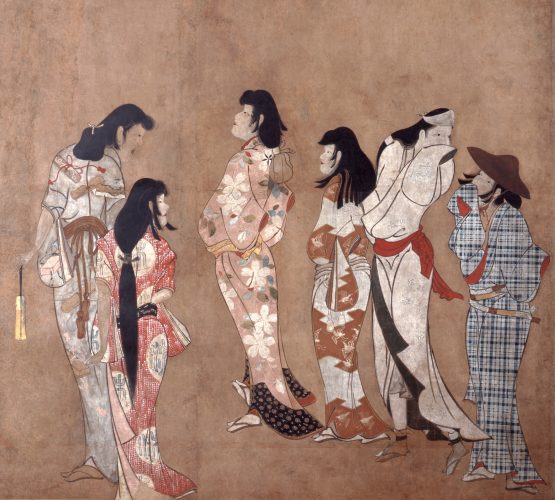The Momoyama period saw luxurious culture flourish with many elaborate paintings and folding screens produced in numbers, but there was also another extreme that was quietly established, seen in chanoyu, and wabi-cha in particular. It was elevated to an established style of tea ceremony by Sen-no-Rikyū, and its practitioners adored highly aesthetic bowls and other utensils originated in China or Korea, admitting beauty in the materials and imperfection in forms.
Come the end of the warring states, people began having fun as they could afford to in their lives. Paintings from this period depicted customs and recreations popular among common people. Favorite motifs of ukiyo-e in the 18th century included famous kabuki actors and beautiful courtesans of the Yoshiwara red-light district.
This exhibition showcases an excellent mixture of exuberant and rustic beauty that characterizes the arts from the Momoyama and Edo periods from the museum collection. It includes genre paintings and ukiyo-e of the early modern period, notably the celebrated Women of a Public Bathhouse* and Katsukawa Shunshō’s Three Beauties Representing Snow, the Moon and Cherry Blossoms,* as well as refined chanoyu utensils, such as Ayame, a tea bowl inspired by Sen-no-Rikyū and created by Chojiro. (*Important Cultural Property)

Celebrating museum renewal anniversary
Best of Museum Collection Part 2
“Extravagance and simplicity of Momoyama Edo”
September 27, 2019 to October 28, 2019
Locations
MOA Museum of Art
26-2 Momoyama-cho,
Atami, Shizuoka 413-8511
Japan
Phone: +81-(0)557-84-2511